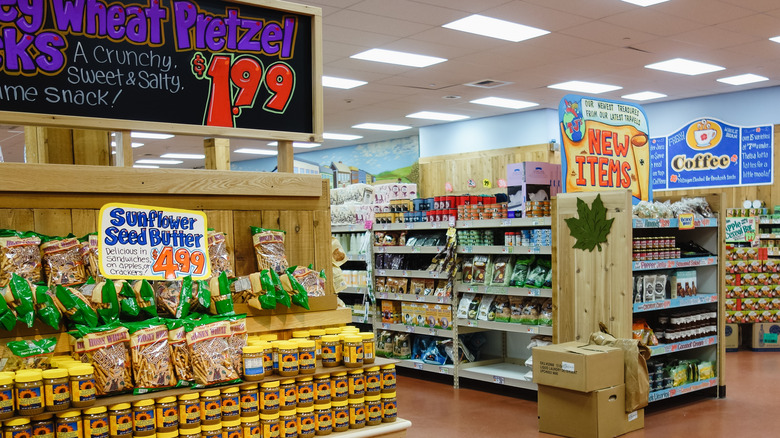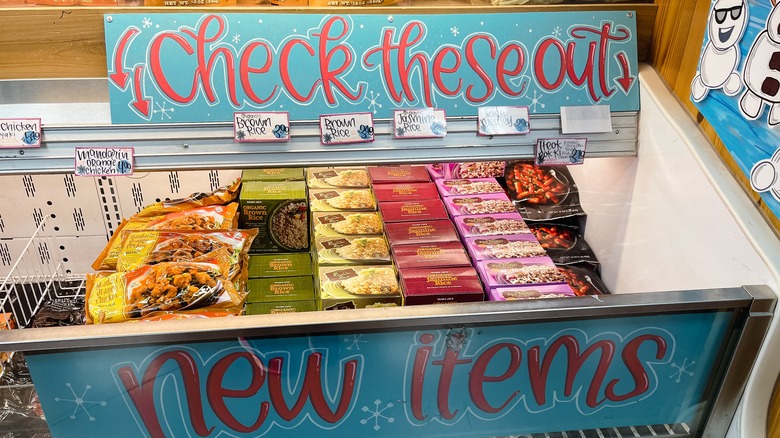The Clever Reason Trader Joe's Offers Fewer Items Than Most Grocery Stores
Trader Joe's is not your average grocery store in oh so many ways – a fact its super fans know well. From the colorful Hawaiian shirts managers wear, to creative, hand-painted signage for the seasonally changing set of delights, the store is designed to appeal to a well-informed customer base looking for unique and interesting food products. A typical Trader Joe's occupies roughly a quarter of the size of other grocery stores — not that there's such a thing as a typical Trader Joe's. Each one is designed to reflect the neighborhood it's located in. It could be as tiny as the smallest underground store in Boston's Back Bay or be stacked in three stories of a building in Manhattan.
A smaller store naturally has room for fewer items for sale. TJ's holds between 3000 and 4000 different items (known in the trade as individual stock-keeping units, or SKUs for short), compared to a Kroger store that might have 30,000 SKUs, or Walmart's astonishing 75 million and growing. If you think this diminishes sales, you'd be wrong. Trader Joe's revenue per square foot is double that of Whole Foods and triple that of retail giant Walmart. It seems limited choice has some advantages in retail.
Understanding customer psychology is key
As a specialty grocer, Trader Joe's may not have everything you need, but they hope you want everything they have. Selling seasonal specialties that vanish at a moment's notice, either because they're so popular they sell out or because the season has ended, keeps customers on their toes and drives sales. If you see that in-demand item, it's best to buy it now because it might not be on the shelf tomorrow. The fear of missing out drives customers to add things to their carts and keeps sales numbers healthy.
Limited options also help prevent choice overload, a situation in which having too many possibilities becomes overwhelming, and you defer a decision until you can make up your mind. A study published in 2000 at Columbia University showed that limiting the number of jam flavors at a farmer's market stand drew fewer people to sample the jam, but more of those people made a purchase than the customers presented with a large selection. By keeping to fewer items on the shelves, Trader Joe's helps you move along through the store, filling your basket with tempting items you can't get elsewhere. It's a clever win-win that keeps us all coming back for more.

